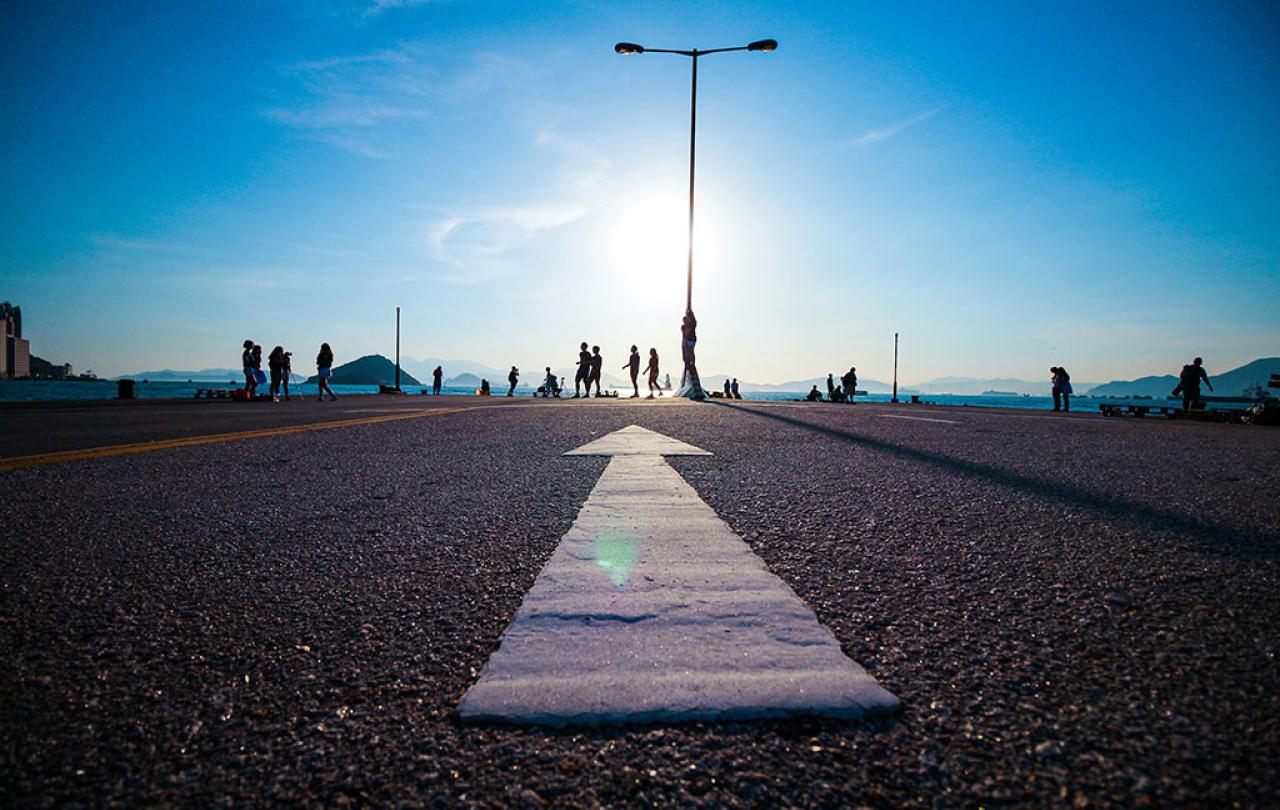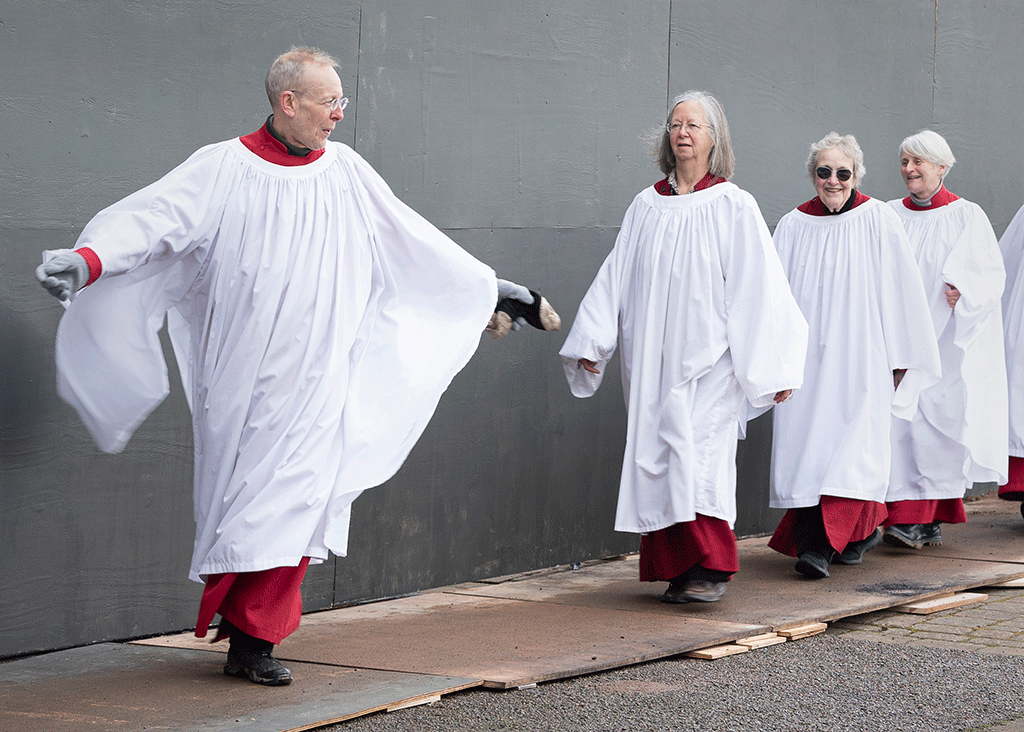
In his 2009 book Start With Why, the leadership speaker and consultant Simon Sinek encourages leaders and businesses to think about their purpose. He encourages them to answer the question ‘Why?’ before moving to ‘How?’ Sinek’s book is part of an industry, with no shortage of self-help books, executive coaches and university programmes assisting individuals in finding purpose. Surely Sinek is right that a sense of mission (the ‘Why?’) needs to come before the development of a strategy (the ‘How?’ as well as ‘Who?’ ‘What?’ ‘When?’ and ‘Where?’). Yet working out our purpose is not easy. It takes time, effort, listening and crucially, an open mind.
In a ‘purpose economy’ (to use the term coined by writer Aaron Hurst), we risk arriving at fast, superficial, or inflated purposes disconnected from the unique vocations to which we are actually called. Several years ago, I undertook a project, of which elements were shared in the Harvard Business Review. One interviewee stated ‘We are a generation that is ruthlessly comparing ourselves with those around us and our role models at the same time. And if we are not doing something exceptional or don’t feel important and fulfilled for what we are doing, we have a hard time.’ In an age dominated by social media and its emphasis on presentation of superficial images inviting us to compare ourselves with others, these are words worth dwelling on.
This reflection struck me at the time, implying that many people believe that their purposes must be significant. Without grand purposes, we tend to struggle. That interviewee was right. Many of us value purposes involving high levels of excellence if not notoriety, whether pursuing elected political office, climbing the ranks in prestigious industries such as finance or consulting, or entering professions that are well-known and whose value can be readily explained to others (such as medicine, law or accounting).
The problem with an idea of purpose focused on excellence is that only some people will be seen to have worthy purposes. The consequence is more ‘ruthless comparison, in which we all look over our shoulders to what our peers are doing, wondering whether their respective purposes measure up or not. Of course, this issue could be dismissed as little more than a case of early-career angst, in which ambitious self-starters seek to outdo their peers in climbing the career ladder, but I doubt this is a good explanation.
Her calling is not as impressive in the world as the more publicly recognised calling of a profession, but surely the calling is of equal value.
After all, modern workplaces are full of people, across all generations, searching for purpose. More generally, rapid industrial transition over recent decades – whether the loss of the shipbuilding or coal mines (not to mention important parts of the steel industry in recent months) in the UK, or the recent loss of manufacturing jobs in the United States – and waves of technological change leave countless thousands of people feeling lost at sea. A sense of aimlessness is amplified when personal dignity is connected to work rooted in local communities. When this industrial work vanishes seemingly overnight amid shifts in government policy and technological change.
These examples suggest the need for a wider understanding of purpose, which makes room for many kinds of excellence, whether grand or small. Consider the example of a single mother. In comparison to the high-flying politician, business executive or university administrator, her purpose is anonymous. A paid job in the workplace is unlikely to be the source of the single mum’s purpose. Rather, the raising of a family is almost certainly the driving purpose in her life, a purpose which is nevertheless no less significant than those occupying more esteemed, high-status roles.
In the eyes of God, the single parent is called to the vocation of parent (I don’t think there is a difference here between a vocation or purpose), possibly through an unexpected event such as a divorce or passing of a spouse. Her calling is not as impressive in the world as the more publicly recognised calling of a profession, but surely the calling is of equal value. Indeed, from a Christian perspective, the lone parent fulfills a vital role of service in raising children who can help to approximate the Kingdom of God on Earth. Martin Luther pointed it out well: every person has a divine calling providing them with purpose, whether they are aware of this or not.
The idea is that a sense of what we are becoming matters more than the circumstances we find ourselves in.
How then can we define our purpose when elements of culture, technology and other forces tempt us to identify clear purposes as rapidly as possible? To start, it helps to resist the urge to form large and lengthy purposes. Our purposes are often revealed gradually. Even the most profound events altering the landscape of a person’s life must be digested slowly. Tom Wright, in his biography of Saint Paul, writes that after Paul’s encounter with Jesus while on the Road to Damascus, he returned to Tarsus for ten years to meditate on what he had learned. In all likelihood, Paul spent this time working as a tentmaker, working within a ‘small, cramped workshop,’ in which ‘he prayed, he studied, and he figured out all sorts of things.’
It is only ‘by the end of the Tarsus decade [that] Saul had worked out in considerable detail what it meant that the One God had revealed himself in and as the crucified and risen Jesus.’ Paul’s purpose was formed over many years, ‘hammering away’ at what he learned on the Road to Damascus. Had Paul wanted to make sense of his encounter with Jesus in a single go, then his purpose would surely have been truncated, thereby limiting the fulfilment of his unique calling that transformed the world we live in today.
Our circumstances may also limit the scope of our purposes. Our family, geography, gender, and socioeconomic situation all shape the people we become – at least in the short-term. The philosopher Robert Adams writes in Finite and Infinite Goods that ‘One’s actual circumstances condition and in various ways influence and limit one’s vocation. The vocation, however, is not the circumstances, but what one is called to do in them.’
The idea is that a sense of what we are becoming matters more than the circumstances we find ourselves in. The question of who we wish to become is a crucial one, involving personal vision, and Adams sees this question as outweighing extensive consideration given to existing circumstances. Another idea of vocation, proposed by the theologian Oliver O’Donovan, is more gradual. He says that we come to be a certain person over time, without too much planning. Our purposes develop one day at a time. Specific events give us chances to put our purposes into action, but we do not know when these events will occur.
With this approach, clear purposes are formed over time through constant practice, rather than revealed at the outset of an activity.
How then can we find our purposes when they are often ambiguous, intertwined with our personal circumstances, and without too much recourse to self-help books, life coaches or university programmes recommending quick answers?
Our purposes need to be worked out through consistent, small-scale practice of the things we enjoy. For some, this is the playing of a musical instrument, for instance the piano or guitar, two hours per day. For others, this is the constant practice of a given sport in the early hours of the morning. And for others, this is working away on a tricky mathematical problem that simply grips them.
With this approach, clear purposes are formed over time through constant practice, rather than revealed at the outset of an activity. It is then unexpected events – as Harold MacMillan said ‘Events, dear boy, events’ – which shape us. These events may change us, setting us in entirely new directions much like Paul’s encounter on the Damascus Road, or the lone parent following a divorce or death of a spouse. But it is not only the events that create purpose. The seeds of purpose are planted well ahead of time, through practice in relation to the things that bring us joy.
Our purposes, then, should be less a cause of anxiety requiring self-help industries – needing to figure everything out at once – than a reason for play, practice, and prayer, listening to the still small voice – perhaps the voice of God, gently leading us to a settled sense of purpose. This allows purposes we never imagined to reveal themselves to us over time, sometimes merging with – and sometimes out of – our circumstances and personal attributes that are more easily visible.
Rather than search for fast answers to our purposes, we can take comfort knowing that we do not need to do all the work ourselves. We may begin to work out our purpose through action, but trust that our purposes will come to fruition when the time is right.









